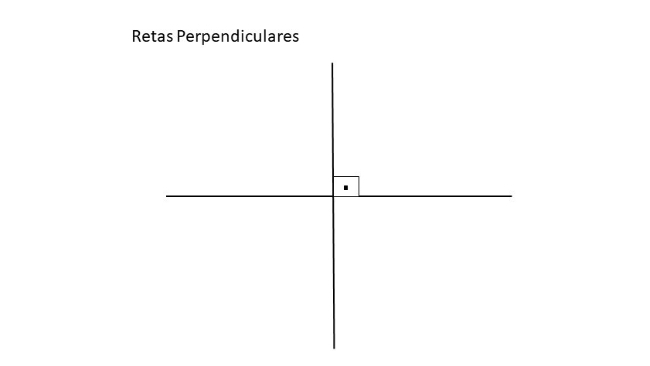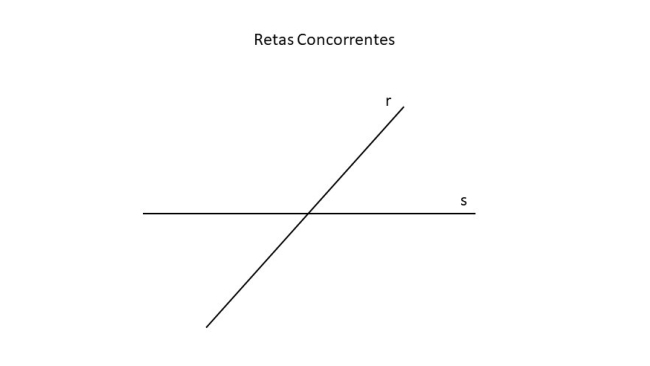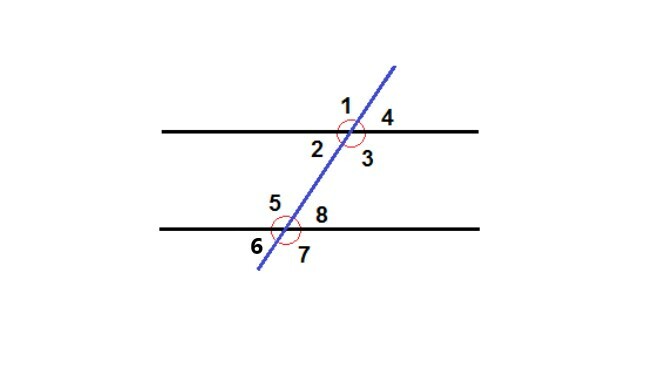They are two distinct lines that have the same slope, they never intersect and there is no common point between them.
Several geometric figures are formed by parallel lines, such as squares, rectangles and parallelograms.
To indicate that a straight The is parallel to a line B we use the following notation: a//b.

Example of parallel lines a and b.
Perpendicular and concurrent lines
While the parallel lines do not intersect, the perpendicular lines meet at only one point, forming a 90° angle as in the image below.

Example of perpendicular lines.
Concurrent lines are two lines that intersect at a common point, regardless of the angle between them, as in the example below.

Example of perpendicular lines.
Parallel lines cut by a transverse and its angles
When two or more parallel lines are intersected by another line, we say that the parallel lines were cut by a transversal.
Each of the parallel lines cut across has four angles. Angles are named according to their position in relation to the parallel lines and the transverse line. They can be correspondents, alternates and collateral.

Example of parallel lines cut by a transversal line, forming 8 angles.
corresponding angles
The angles that are positioned equally on the parallel lines are congruent, that is, they have the same measure.
In the image above, the following angles correspond:
- 1 and 5;
- 2 and 6;
- 4 and 8;
- 3 and 7.
alternate angles
These are the angles that are positioned on opposite sides of the transverse line, and they are also congruent. They can be external or internal.

Angles that lie in the area between parallel lines are called internal alternating angles. In the image above, the alternate internal angles they are:
- 4 and 6
- 3 and 5
You outside angles are the ones outside the two parallel lines. In the image above, the alternate outside angles they are:
- 1 and 7
- 2 and 8
side angles
Collateral angles are those that are on the same side of the transverse line and together add up to 180°. Like alternate angles, collaterals can also be internal and external.

Examples of side angles.
In the image above, the internal side angles are:
- 4 and 5
- 3 and 6
The outside side angles are:
- 1 and 8
- 2 and 7
See more about the meaning of:
- Perpendicular;
- Geometry;
- Adjacent;
- Geometric Shapes;
- Congruent;
- Type of Triangles.
